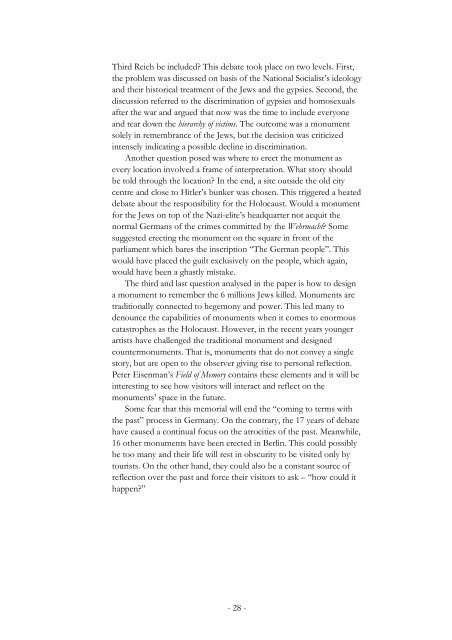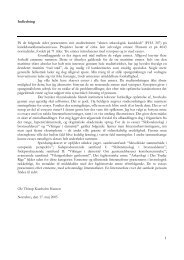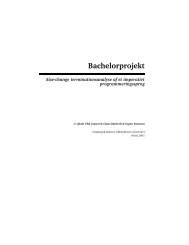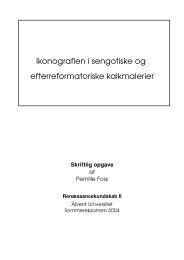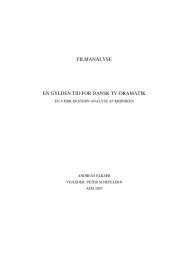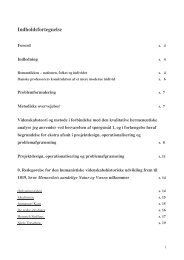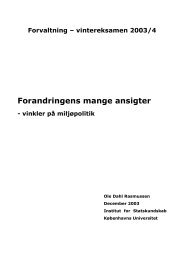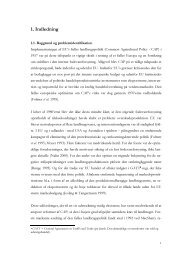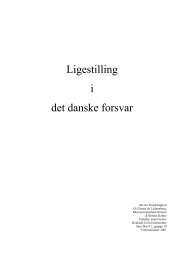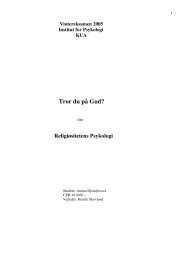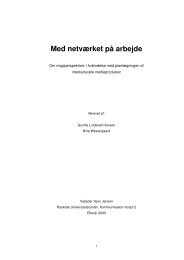Denkmal für die ermordeten Juden Europas En analyse af debatten ...
Denkmal für die ermordeten Juden Europas En analyse af debatten ...
Denkmal für die ermordeten Juden Europas En analyse af debatten ...
Create successful ePaper yourself
Turn your PDF publications into a flip-book with our unique Google optimized e-Paper software.
Third Reich be included? This debate took place on two levels. First,<br />
the problem was discussed on basis of the National Socialist’s ideology<br />
and their historical treatment of the Jews and the gypsies. Second, the<br />
discussion referred to the discrimination of gypsies and homosexuals<br />
<strong>af</strong>ter the war and argued that now was the time to include everyone<br />
and tear down the hierarchy of victims. The outcome was a monument<br />
solely in remembrance of the Jews, but the decision was criticized<br />
intensely indicating a possible decline in discrimination.<br />
Another question posed was where to erect the monument as<br />
every location involved a frame of interpretation. What story should<br />
be told through the location? In the end, a site outside the old city<br />
centre and close to Hitler’s bunker was chosen. This triggered a heated<br />
debate about the responsibility for the Holocaust. Would a monument<br />
for the Jews on top of the Nazi-elite’s headquarter not acquit the<br />
normal Germans of the crimes committed by the Wehrmacht? Some<br />
suggested erecting the monument on the square in front of the<br />
parliament which bares the inscription “The German people”. This<br />
would have placed the guilt exclusively on the people, which again,<br />
would have been a ghastly mistake.<br />
The third and last question <strong>analyse</strong>d in the paper is how to design<br />
a monument to remember the 6 millions Jews killed. Monuments are<br />
traditionally connected to hegemony and power. This led many to<br />
denounce the capabilities of monuments when it comes to enormous<br />
catastrophes as the Holocaust. However, in the recent years younger<br />
artists have challenged the traditional monument and designed<br />
countermonuments. That is, monuments that do not convey a single<br />
story, but are open to the observer giving rise to personal reflection.<br />
Peter Eisenman’s Field of Memory contains these elements and it will be<br />
interesting to see how visitors will interact and reflect on the<br />
monuments’ space in the future.<br />
Some fear that this memorial will end the “coming to terms with<br />
the past” process in Germany. On the contrary, the 17 years of debate<br />
have caused a continual focus on the atrocities of the past. Meanwhile,<br />
16 other monuments have been erected in Berlin. This could possibly<br />
be too many and their life will rest in obscurity to be visited only by<br />
tourists. On the other hand, they could also be a constant source of<br />
reflection over the past and force their visitors to ask – “how could it<br />
happen?”<br />
- 28 -


